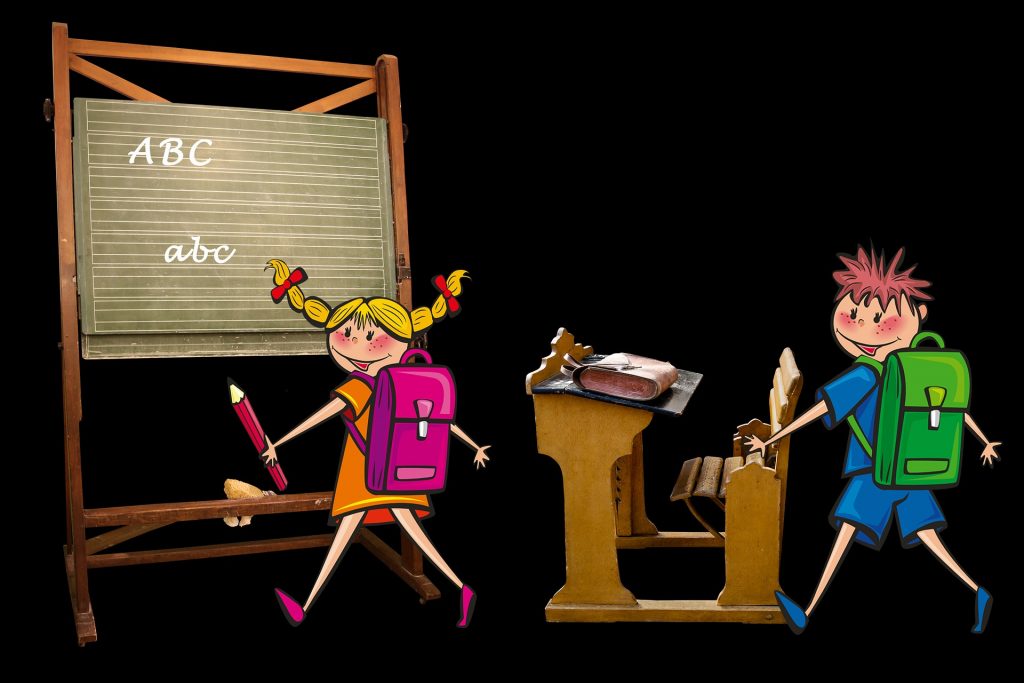
It is Easter and your child’s school starts this year. There are still a few months until the first day of school, but time flies by. In Germany it is now time to take care of the first equipment for the school. Often the first graders get their satchels from their grandparents.
The satchel is the most important single item for your child, the satchel is usually carried on the back and should provide enough space for everyday things such as folders, books, exercise books, paint boxes, sports equipment, lunch and drinks.
For your child, the appearance and the motifs on the satchel will play a role. In fact, today most school bags are colorful and colorful. However, what decides on the quality of a satchel is the structure, the interior and the design.
The origin of the satchel can be found in the knapsacks that the soldiers used to have the most important things with them. It was carried on the back. The earliest satchels were made of leather. Maybe you also had one made of leather. In Japan the traditional “Randoseru” are still part of everyday life.
Weight
As a rule of thumb, the satchel with content should not weigh more than 10% -12% of your child’s body weight. As an example, if your child weighs 25 kg, they should not weigh more than 2.5 kg to 3.0 kg.
Since some models can weigh up to 1.5 kg, this is a special challenge if your child is just having a birthday before starting school.
Here it is important that you look at the weight of the satchel when buying a satchel. There are already models that weigh only 800 – 900 grams.
It is important that your child does not carry too many things around. Therefore check the satchel every day. Make sure that the things your child doesn’t need that day stay at home. A suitcase or handle scale will serve you well.
If you see that on certain days the weight is regularly too much, think about how you can reduce the weight. Or talk with your child’s teacher to find a compromise. Does your child really need everything? Do all crayons really have to come along on this day? Is it enough to just add a few colors from the paint box instead of the large double-decker?
Another tip if you pack the satchel for the day ahead. Books and other heavy things are better kept near the back, which helps better distribute the load on your child’s back, shoulders and hips.
Back shape
In order to relieve the strain on your child’s spine and ensure good posture, it is important to have a back shape that is tailored to the body. For this purpose, your child’s school bag should contact in several places and be well padded there. This protects the back and prevents books from pressing on your child’s back. Make sure that the cushions are not too hard, otherwise they can press too hard on the back.
There are also satchel systems in which the back parts are adjustable and interchangeable. The satchel grows with your child.
Overall, the back shape should follow the course of your child’s spine.
Additional mesh materials ensure good air circulation on the back and prevent your child from sweating under the back section.
Ergonomics
In order to protect the back and neck of your child, the format of the satchel plays another important role. For this you should prefer a school bag in portrait format. The portrait format offers another advantage, it stands better on the floor and is more stable.
A variable division inside is also a plus point.
Shoulder Straps
That the satchel can be adjusted to the size of your child, it must be adjustable. A good satchel has wide, padded shoulder straps that can be adjusted in height, as well as a chest and hip belt. The additional straps give a better hold and fit.
S-shaped shoulder straps adapt better to your child’s body shape and ensure better weight distribution.
Make sure the cushions don’t slip under your child’s armpits. This can cause the skin to rub off.
Belt
That your child’s satchel does not develop into a trip hazard, make sure that the straps can ideally be hooked into the straps at the top. Often your child will simply grab the satchel by the handle and run out of the classroom. If the straps fly between his legs, it can easily get tangled or the next child might step on them running down the stairs.
Handle
It is best that the satchel have a wide, padded handle that your child can hold. If the handle is hard and edgy, the true weight of the satchel becomes painfully noticeable when the handle cuts into your child’s hand.
In addition to the handle, a loop on the back is helpful, on which your child can hang the satchel on a hook.
Safety
For road safety, your child’s satchel should have fluorescent and retroreflective materials. Flashing wristbands, orange or yellow safety vests and LED lights can provide additional protection of his safety.
In European countries such as Germany, it is mandatory that 20% of the side and front surface are covered with fluorescent materials so that your child is also noticeable on the road during the day. And another 10% of the front and side surfaces with retroreflective materials that reflect the light from car, bus and truck headlights at dusk and in the dark.
Hazard Substances
Make sure the satchel for your child is free of any harmful substances.
You should go a long way around organophosphorus compounds such as TNPP, plasticizers such as DEHP, environmentally harmful optical brighteners and chlorinated compounds to name just a few.
It is best to ask and have the safety of your satchel confirmed in writing if in doubt.
Stability
Your child’s satchel has to endure a lot. He is thrown into the corner full of books and notebooks, the children fall on the satchel or crawl over them. Therefore, your child’s satchel must be stable and stand upright without tipping over. Empty or packed.
This also applies to the lid. It should open just as easily, but not close by itself.
Accessories
In addition to the satchel there are matching sports bags, pencil cases with pencils, pencil cases, Kletties and water bottles. As a set or individually. You have to decide whether this is useful for your child or not. Also on the quality of the pencils and pens or if you have already good ones at home you want your child to use.
Not all satchels are waterproof, so a rain protection is a useful addition.
Try On
The satchel will be your child’s daily companion for a few years. Even if it is a gift from your parents or parents in law, choose the satchel together with your child. Try it on with and without a jacket. As said, it should sit well, not rub, constrict or press.
Cleaning
Your child’s satchel needs thorough cleaning at the latest in the first summer vacation. First knock out the crumbs and dirt and suck it out. Most materials from which the satchel is made today are easy to care for. A cloth or sponge with warm water and a few splashes of your dishwashing detergent will be good enough. Possibly. you have to repeat the process for heavy soiling. And the satchel can dry in the air.
Alternatives To Satchels
A school backpack is a popular alternative for some elementary school children. They look modern and there are thousands of different designs. However, they are less suitable for your child. Because they are too soft and flexible, the weight carried is distributed unevenly over your child’s back and spine. Most of the school backpacks are not waterproof and have no interior divisions.
What can also be seen more and more often in older children are the pullable satchels or trolleys. Your child is not burdened with the weight of the satchel on the back, but the wheels of the trolley that the child pulls behind carry the load. Which also easily leads to your child taking more with him than he actually should. The structure of the classic satchel is very similar.
Nevertheless, experts advise against trolleys. On the one hand, a trolley loads your child unilaterally when pulling. If this is still heavily loaded, your child will take an inclined posture much more easily, which can lead to possible incorrect posture. And what does your child do if it cannot pull the satchel and need to carry it up to the 3rd, 4th or even higher floor?
What kind of satchel have or will you get for your child and why?
Leave your answer in the comment section below.
Subscribe To Our Newsletter
Join our mailing list to receive the latest news and updates.

Recent Comments